Catchments 2025: The environmental awareness project bringing artists, scientists and communities together
Wednesday, 27 August, 2025
Share
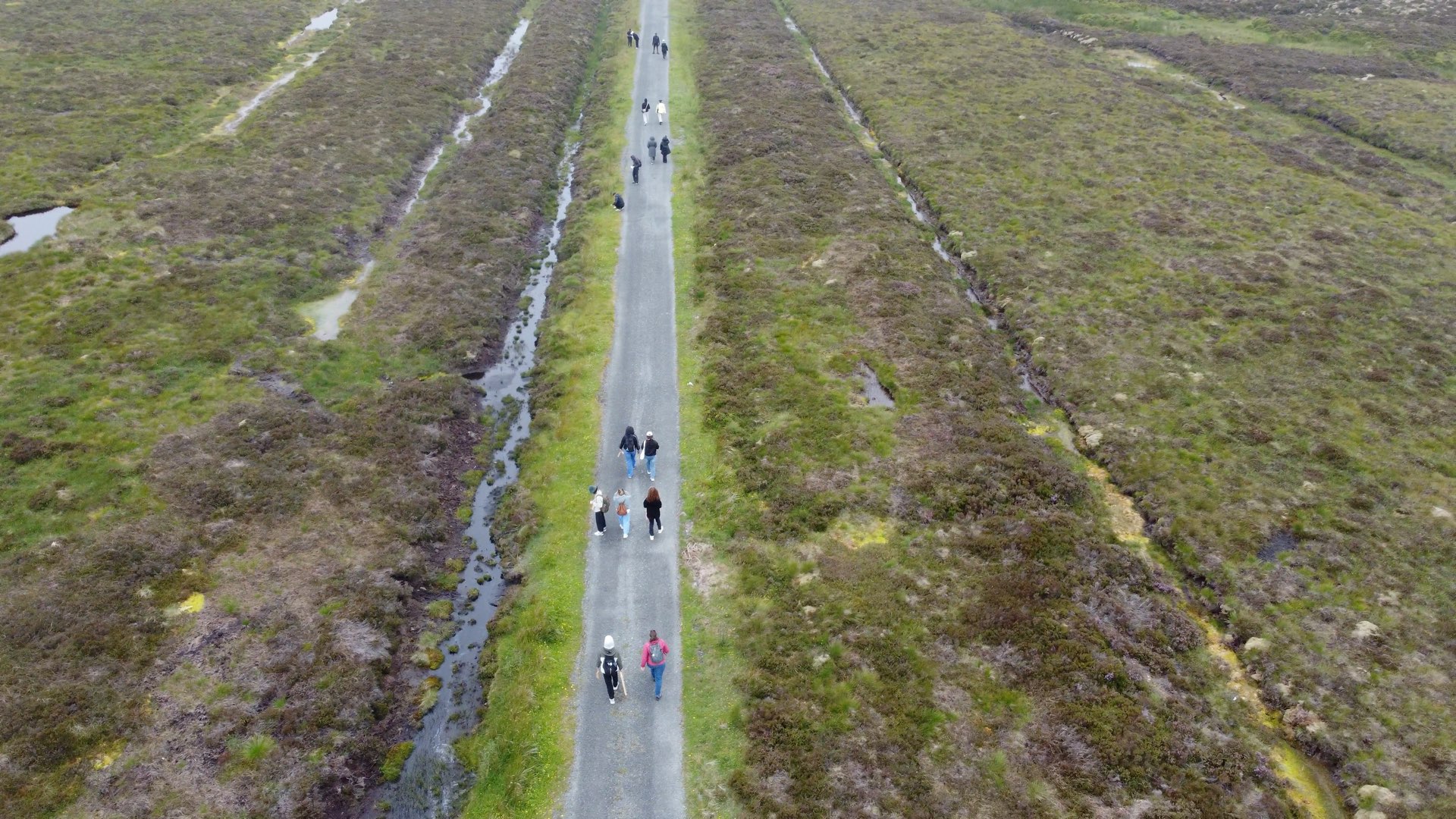
Two artists whose work has been showcased in some of Europe’s most famous galleries have been sharing their creativity on home turf through an Earth Institute-supported community project.
Paris-based artists Anne Cleary and Denis Connolly collaborate with scientists, the artistic community and the public to help increase environmental awareness.
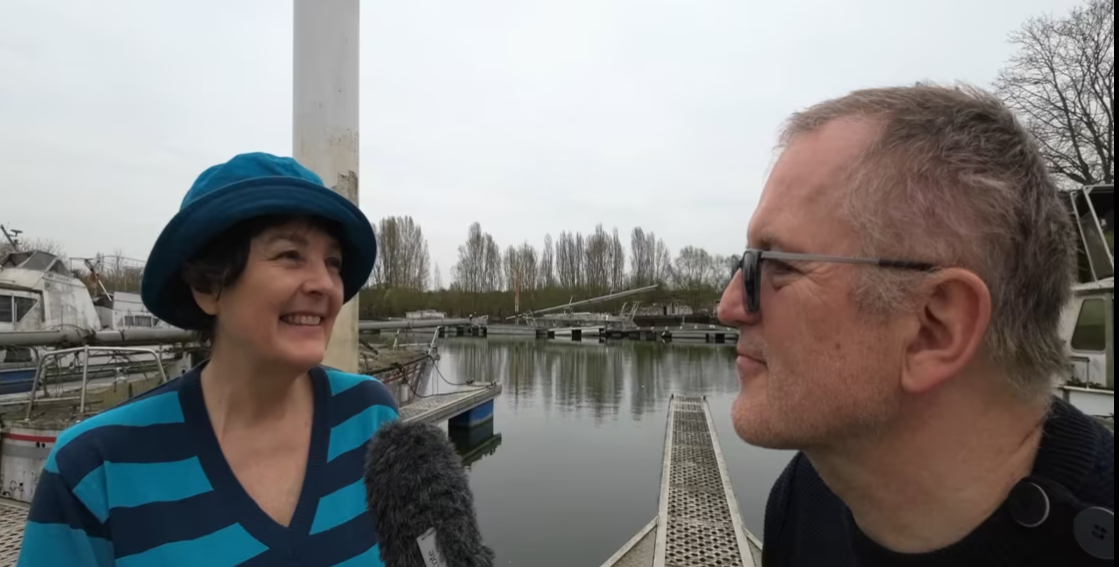 Artists Anne Cleary and Denis Connolly
Artists Anne Cleary and Denis Connolly
Over the past few months, Anne and Denis, who practise under the name (opens in a new window)The School of Looking, have been working on Catchments 2025 – a nationwide programme combining STEM with film, visual art, music and spoken word, through riverside walks, workshops, screenings and performances.
The aim of the project is to give communities across the country the chance to feed into important conversations surrounding water quality and biodiversity loss in habitats along Ireland’s waterways.
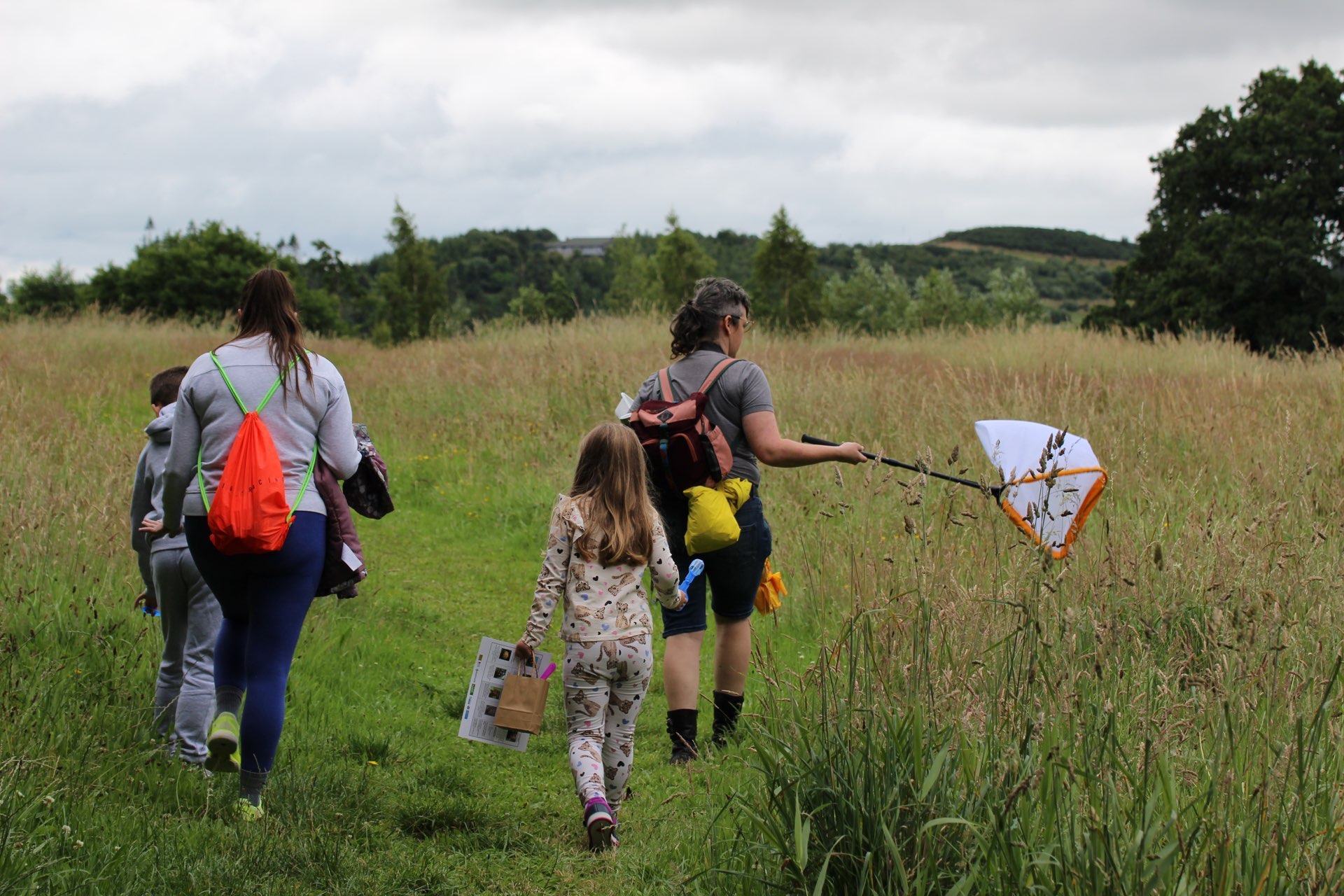 Participants at a themed walk in Ennistymon, Co. Clare
Participants at a themed walk in Ennistymon, Co. Clare
The artists’ long-term plan is to bring the programme to all 46 catchments in the country. They started this year with Catchments 2025, a plan to visit seven water bodies in catchments across Ireland:
- The Liffey Head Bog, Co. Wicklow
- The Dodder, south Dublin
- The Boyne, Co. Meath
- Lough Muckno, Co. Monaghan
- The “old” River Shannon, University of Limerick
- The Ballymacraven River, Ennistymon, Co. Clare
- The Lee Fields by the Weir and the Old Cork Waterworks, Cork City
At each site, Anne and Denis have been meeting with the public, local action groups, refugees and artists. During these visits, they record short films, carry out STEM demonstrations, run arts workshops and creative writing events, and work with community groups.
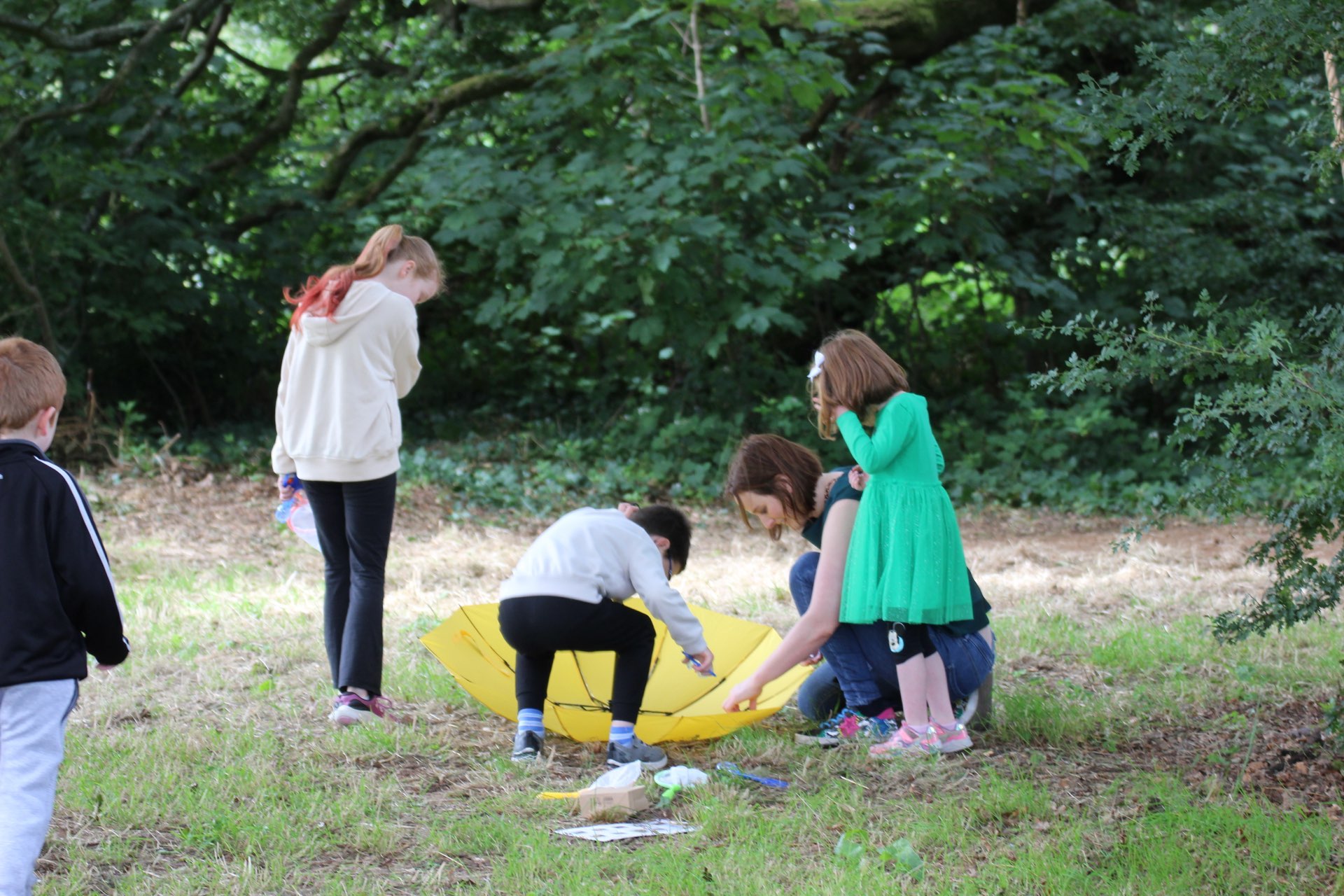 A family takes part in a project in Lough Muckno, Co. Monaghan
A family takes part in a project in Lough Muckno, Co. Monaghan
The artists have also been collaborating with researchers as part of the project, three of whom are members of the Earth Institute – (opens in a new window)Dr Marcin Penk (UCD School of Biology and Environmental Science), (opens in a new window)Professor Mary Kelly-Quinn (Head of UCD School of Biology and Environmental Science) and (opens in a new window)Dr Jonathan Turner (UCD School of Geography). Dr Penk and Dr Turner feature in the short films (opens in a new window)If You Pick Up A Rock and (opens in a new window)The Bend in the Boyne, respectively.
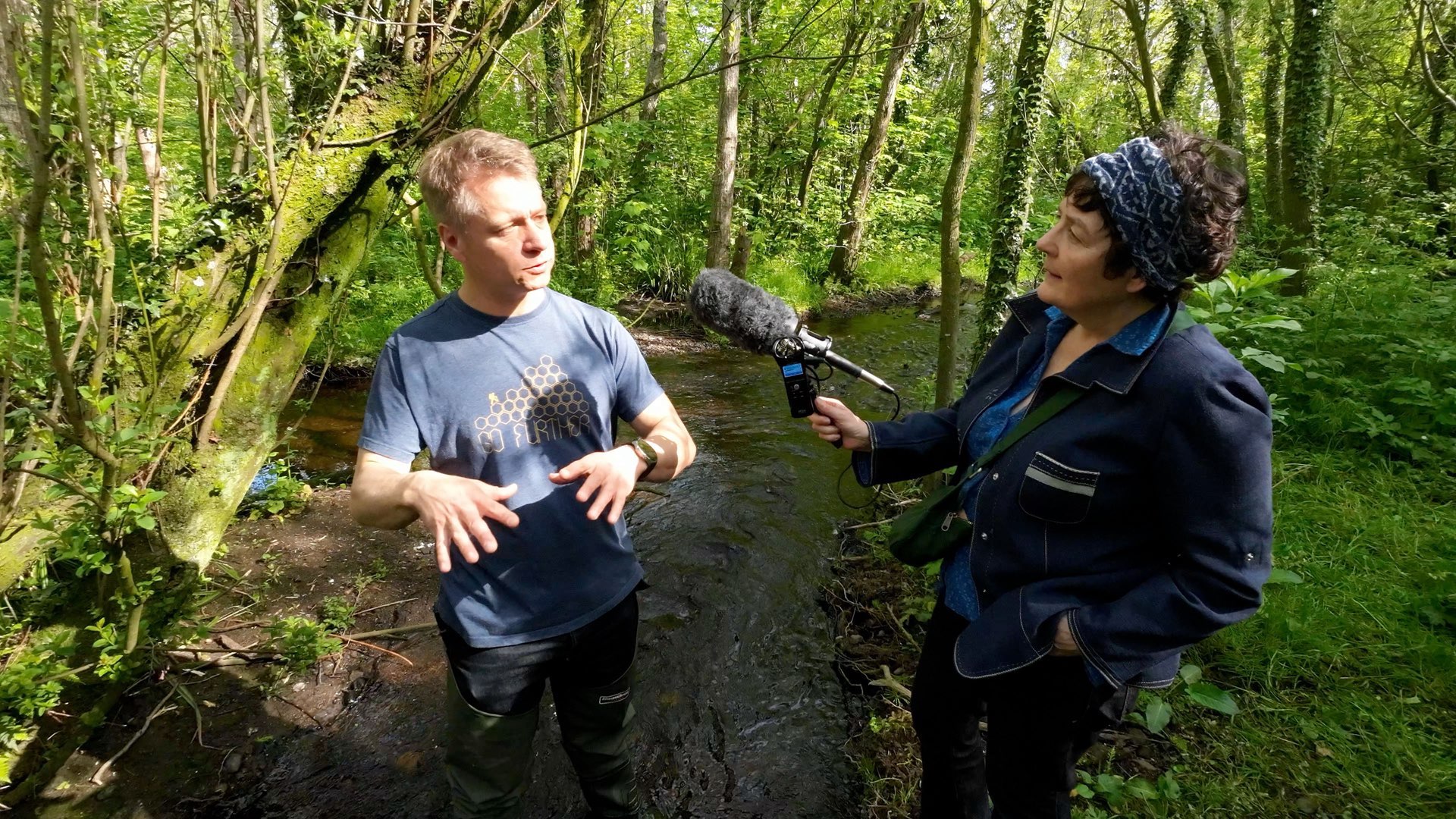 Invertebrate biologist Dr Penk enters into the flowing Dodder to take some kick samples and ascertains that the water at this point in the Dodder is of unexpectedly good quality
Invertebrate biologist Dr Penk enters into the flowing Dodder to take some kick samples and ascertains that the water at this point in the Dodder is of unexpectedly good quality
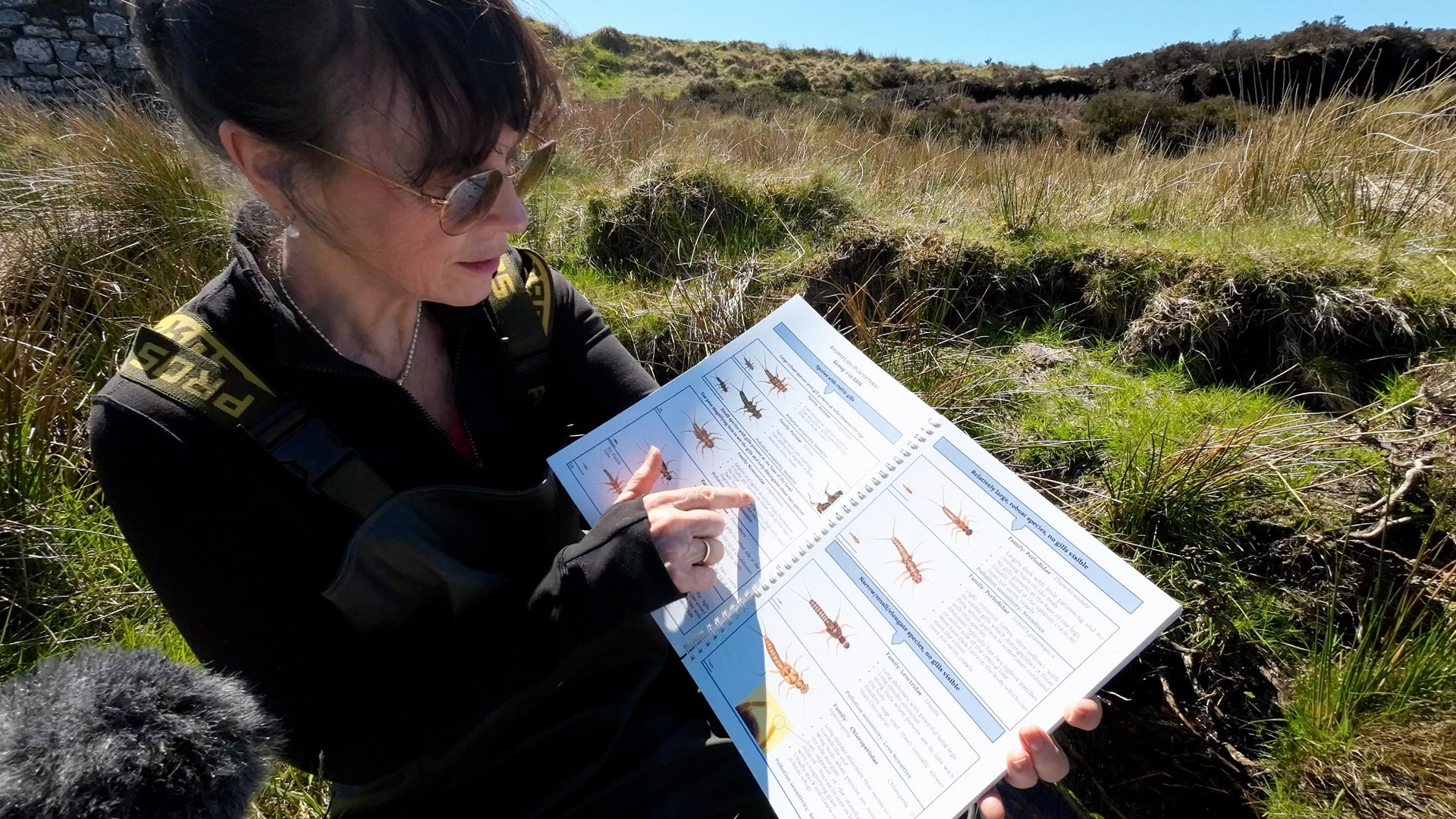 Professor Kelly-Quinn's engagement with the project on the Liffey will form part of a soon-to-be-released short film called The Source
Professor Kelly-Quinn's engagement with the project on the Liffey will form part of a soon-to-be-released short film called The Source
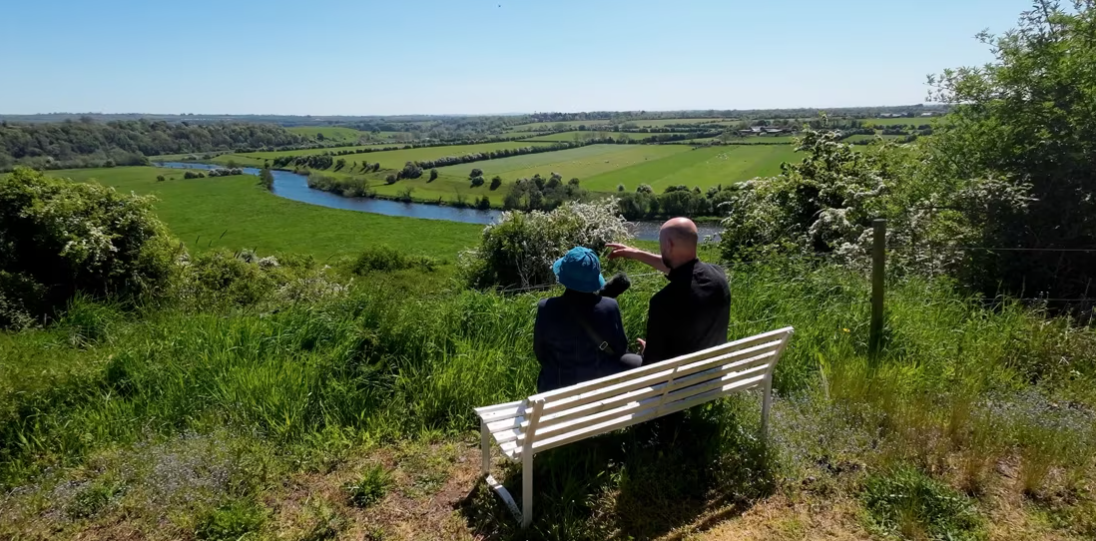 Dr Turner, pictured here with Anne Cleary, talks about the geological and glacial forces that formed the Boyne Valley during the last Ice Age, forming the valley's steep walls and hummocky topography, and how arterial drainage further modified the form and impacted the flora and fauna of the river
Dr Turner, pictured here with Anne Cleary, talks about the geological and glacial forces that formed the Boyne Valley during the last Ice Age, forming the valley's steep walls and hummocky topography, and how arterial drainage further modified the form and impacted the flora and fauna of the river
Alongside the Earth Institute, the project was supported by a Research Ireland Discover Award, Creative Ireland, the Department of Education, and seven local authorities.
You can find out more about upcoming Catchments 2025 public engagement events, such as walks, workshops and film screenings (opens in a new window)here.